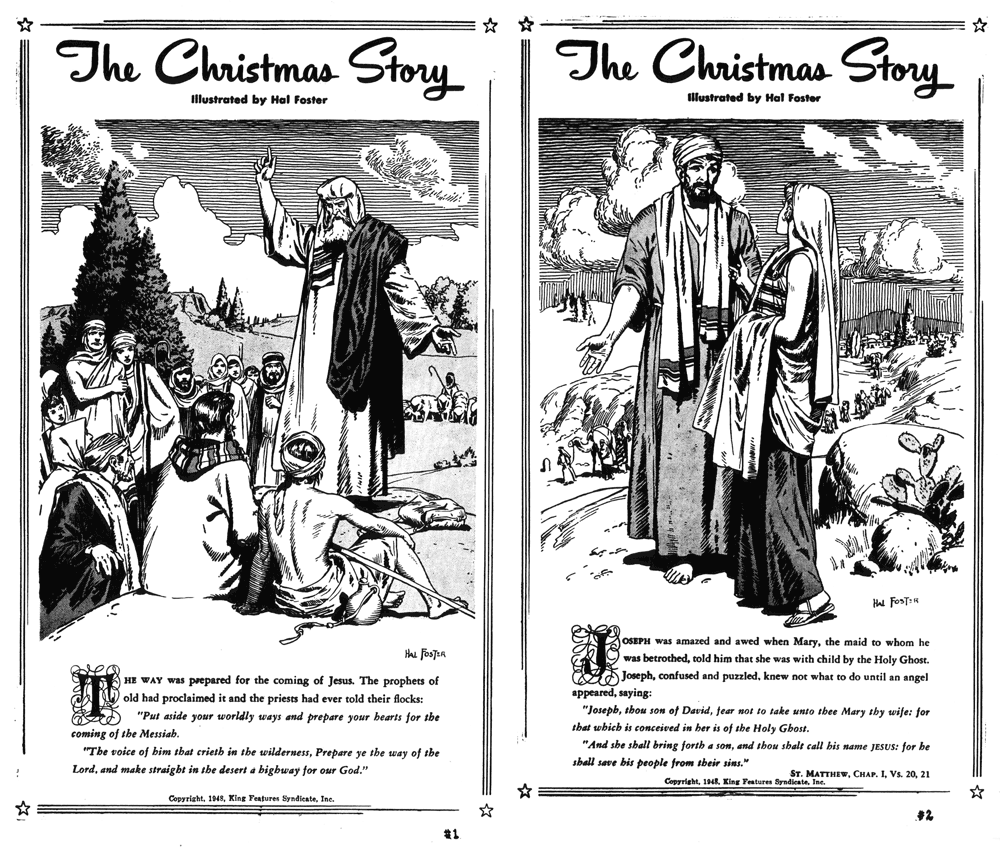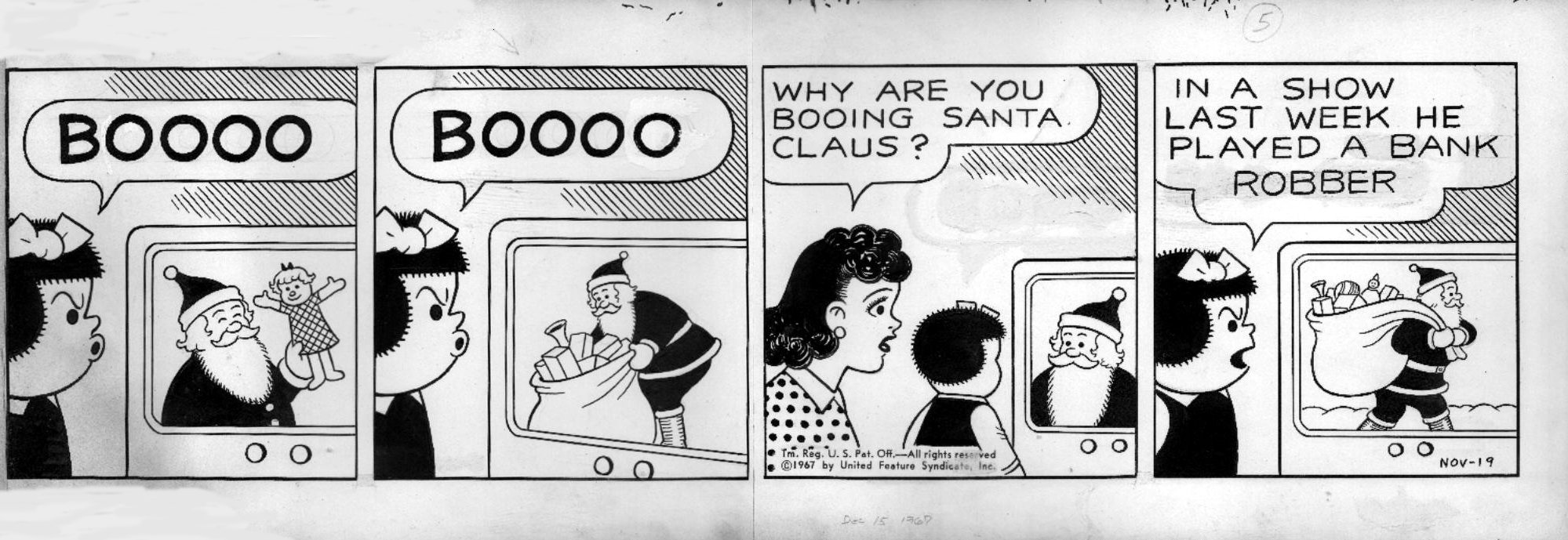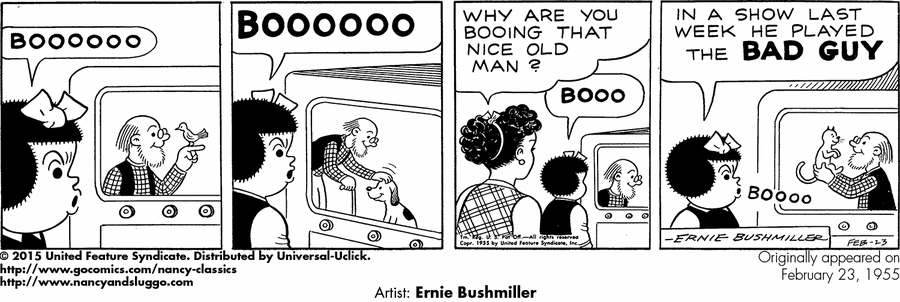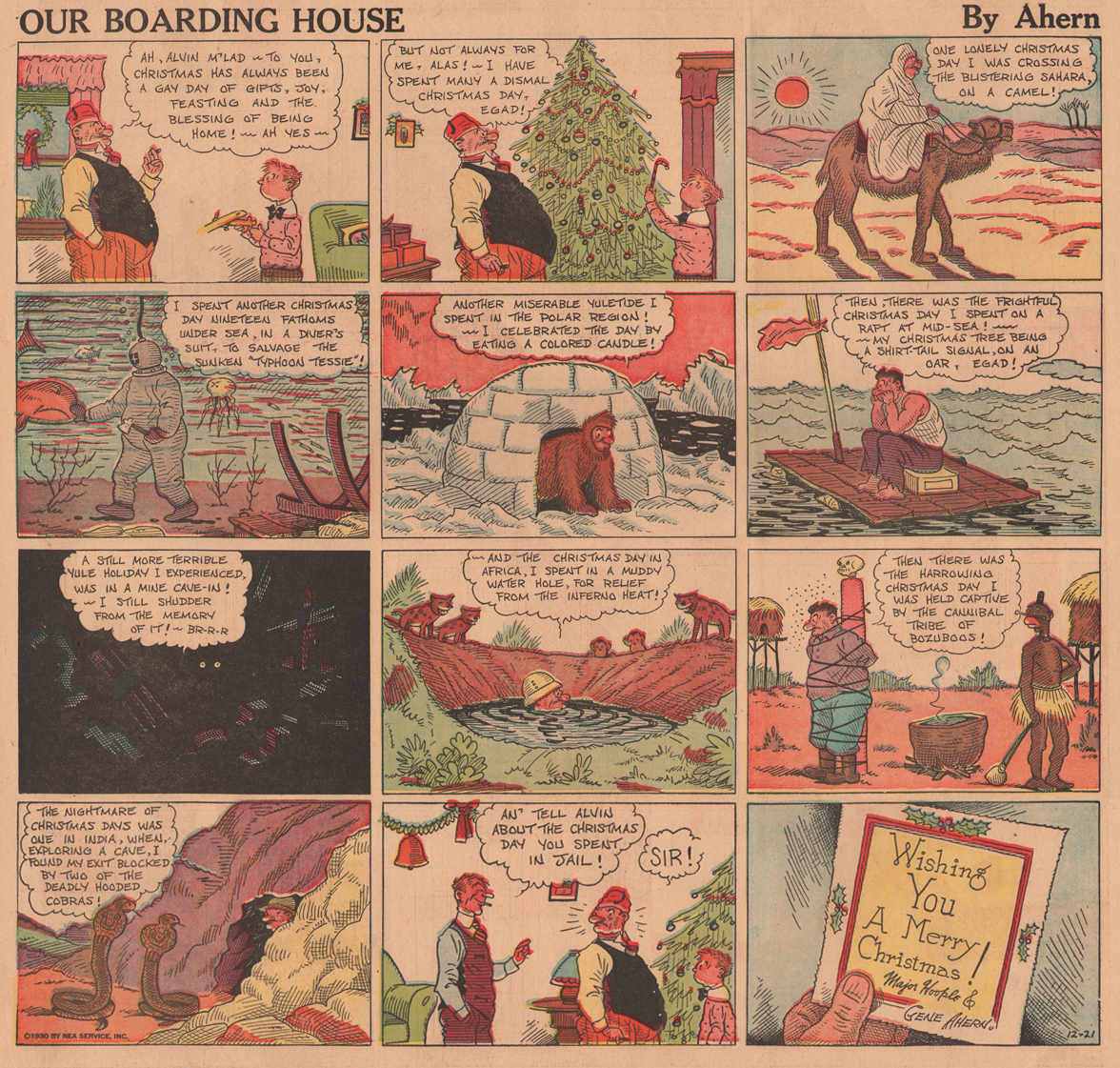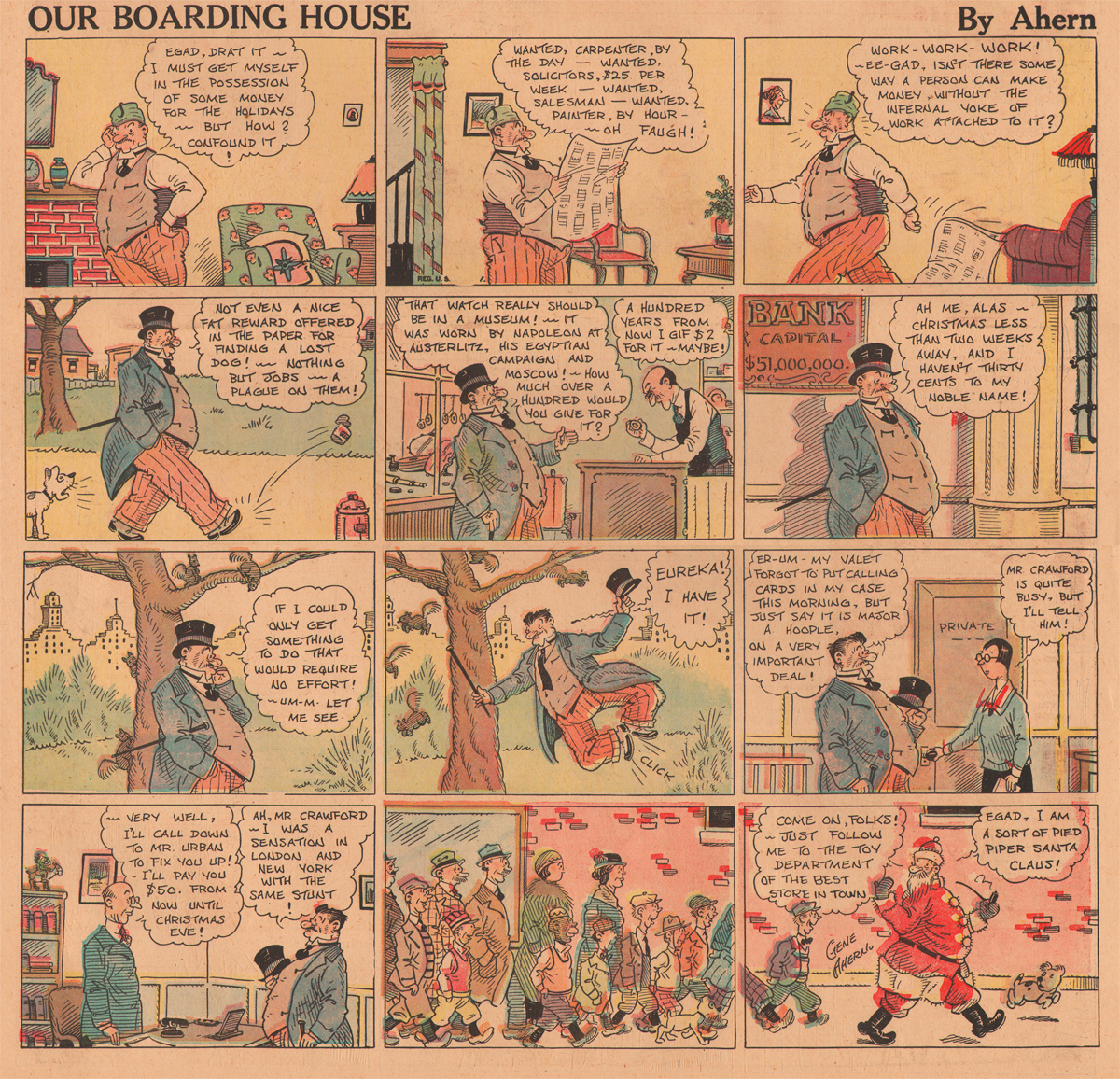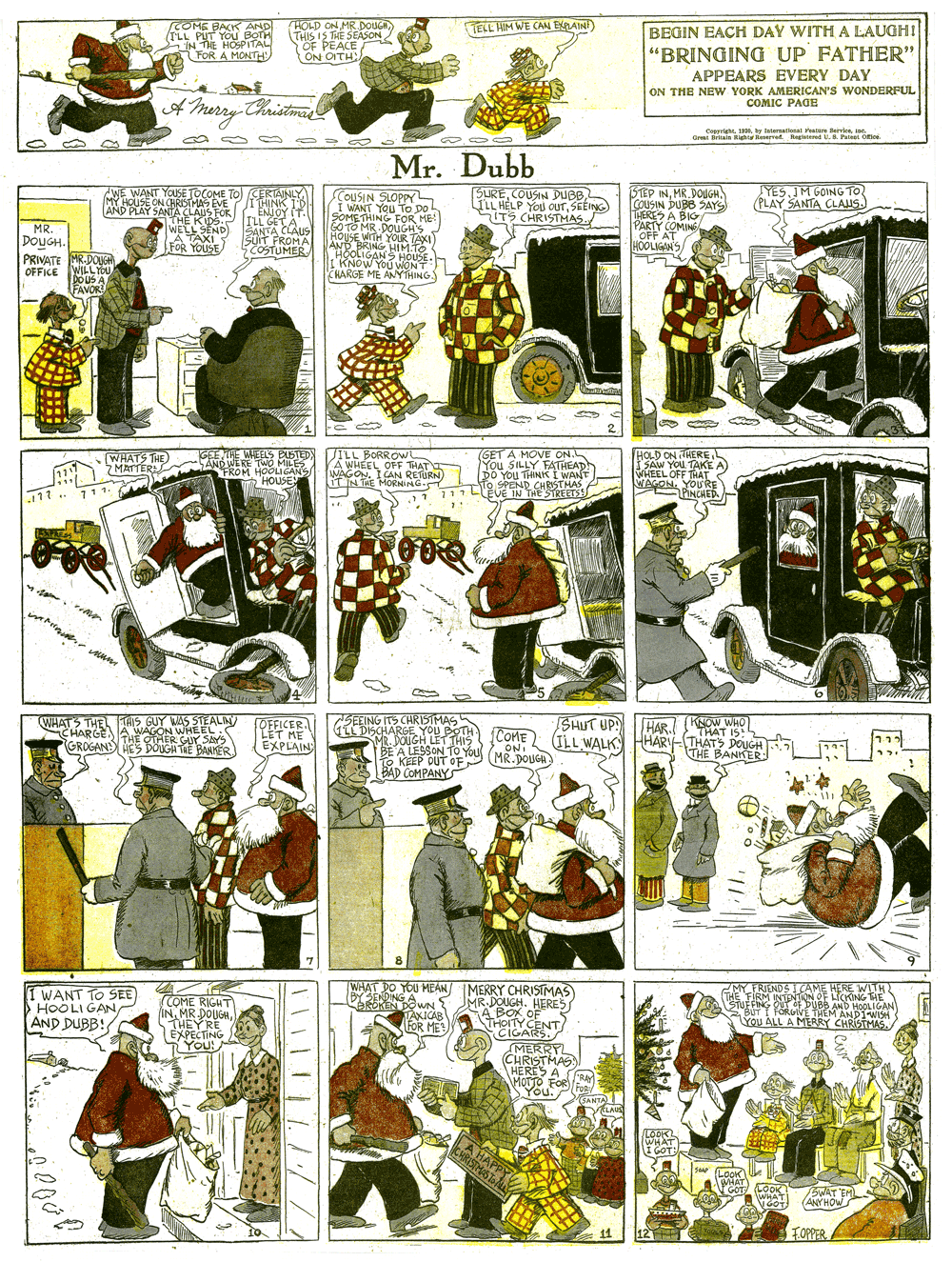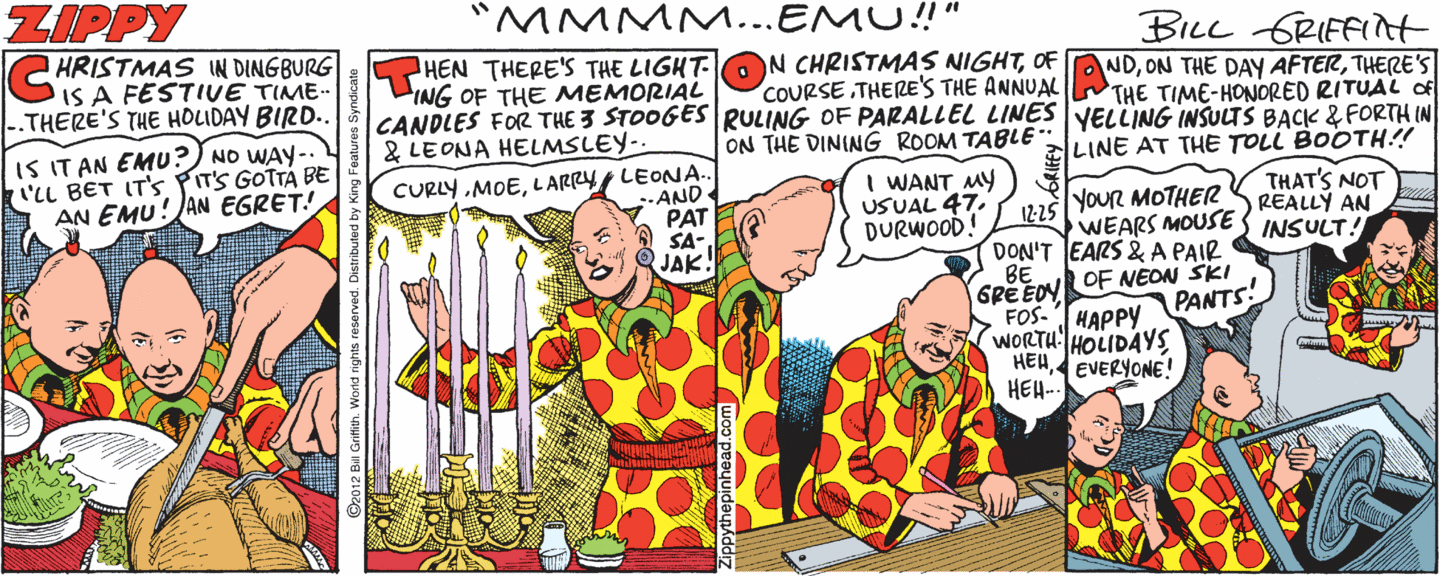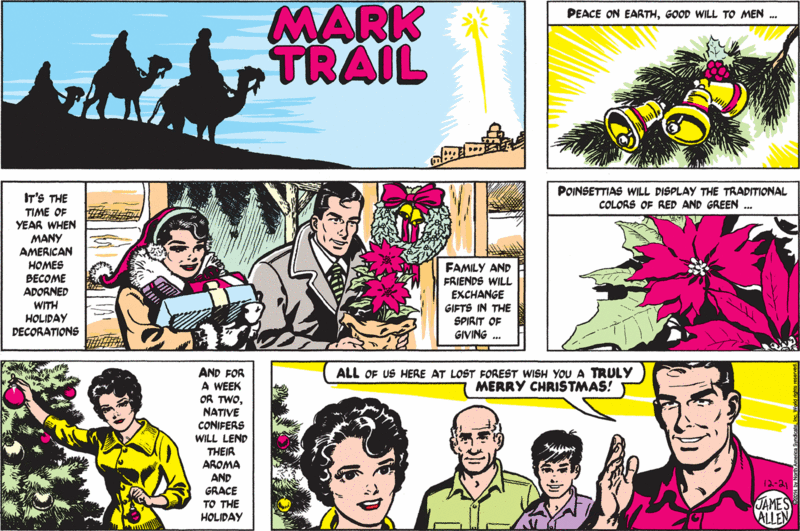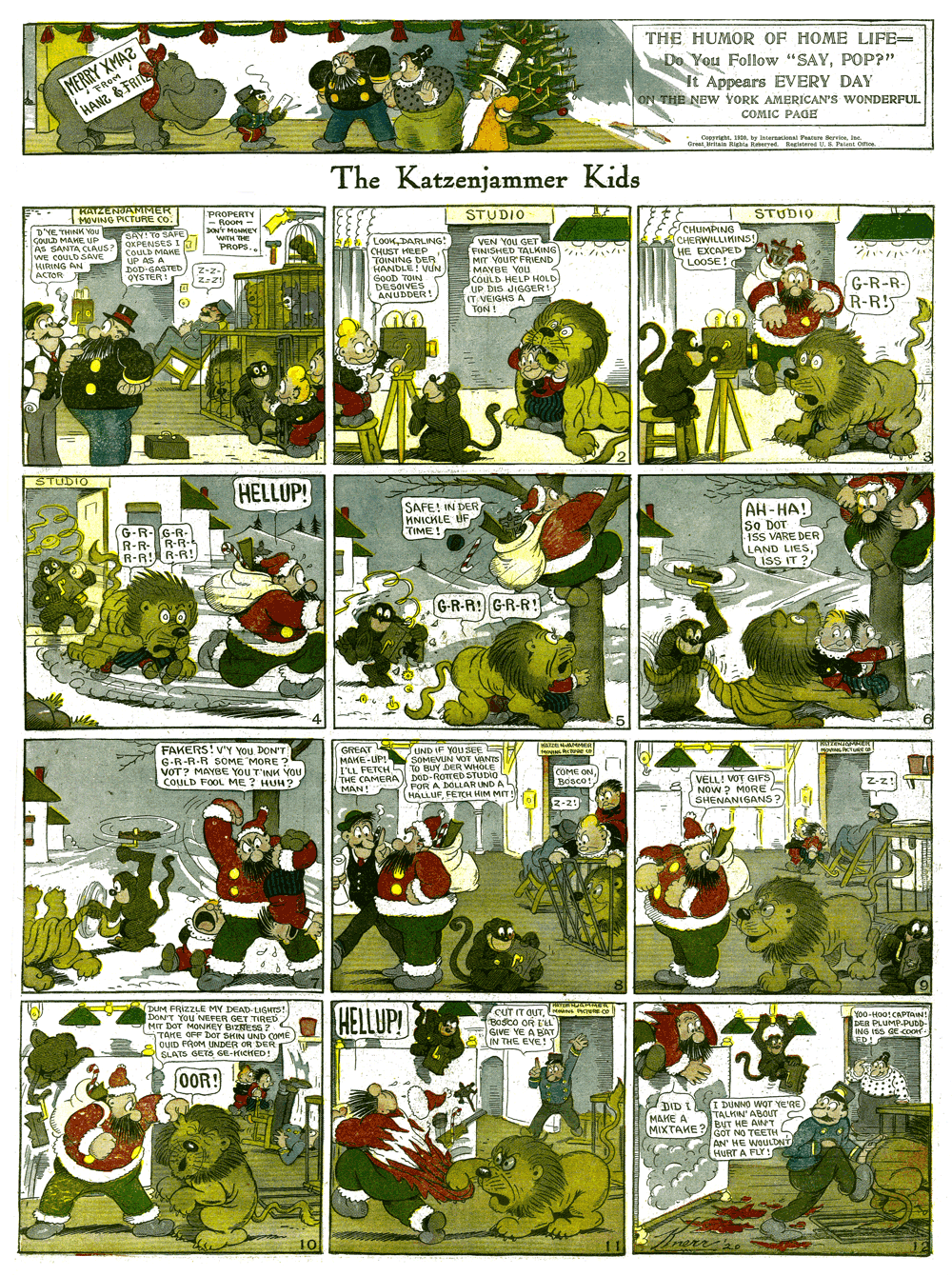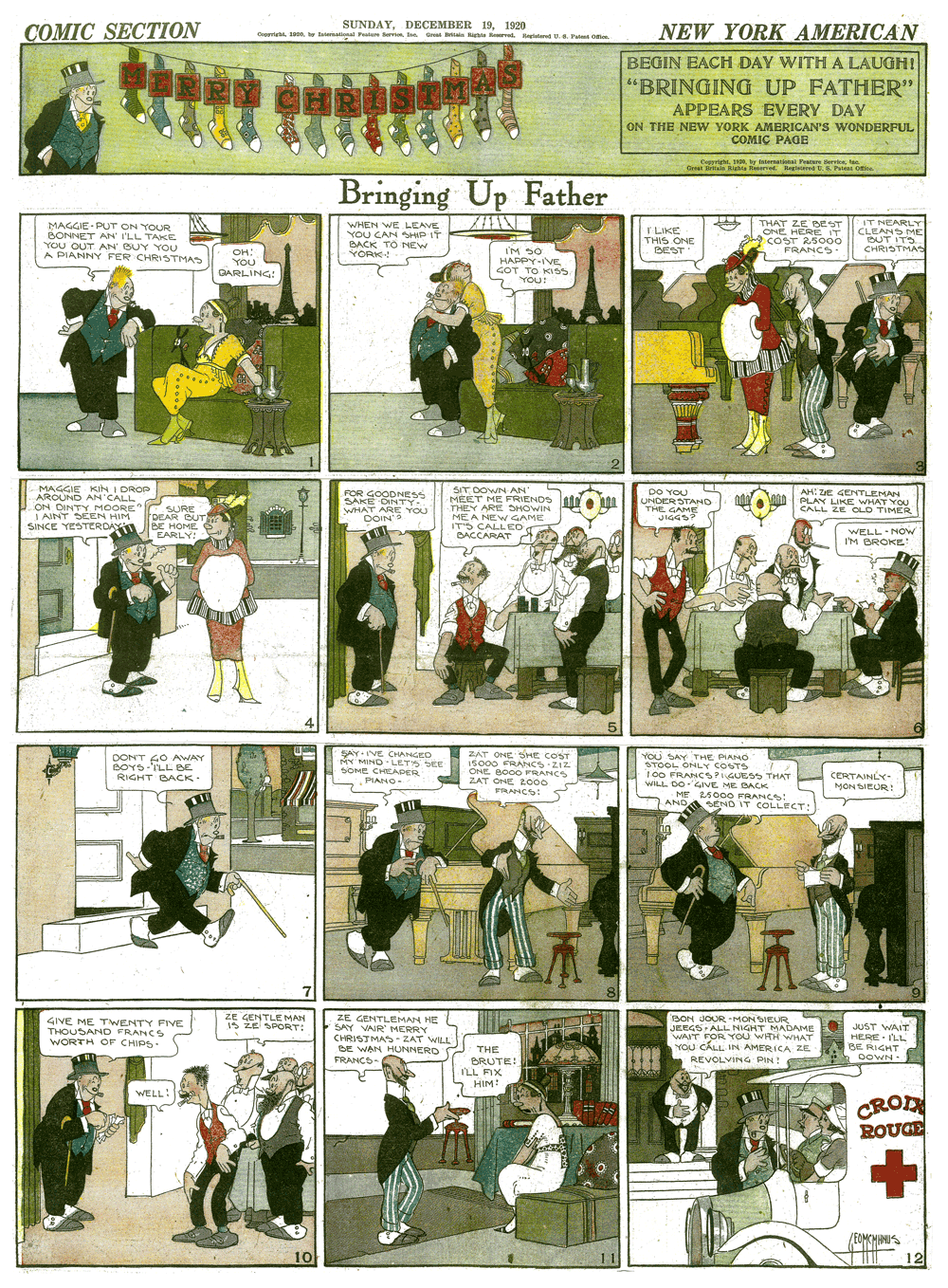Click the image to see a larger version.
These are the first two pages of a short-run Christmas series commissioned by King Feature Syndicate in 1948. It's been a common tradition over the years for syndicates to order these kinds of Christmas series, though it's become less common more recently. The themes of these series vary, and while some of them are of the Santa Claus, elves, and reindeer variety, there were many that took the religious approach. This series was done by Hal Foster, who was a devout Christian himself and therefore quite comfortable with the material. It's unusual, though, as it was a large format with only one illustration each day and a caption which told the story as contained in the Bible. It's definitely the best format for Foster's beautiful and striking images, though.
Hal Foster is best known for creating the Prince Valiant comic strip, though he never sought out a career in cartooning. He was originally an illustrator, and doing quite well at it. He was asked to draw some illustrations for the Tarzan comics, and caught the eye of William Randolph Hearst, who wanted him to do a comic strip for his King Features Syndicate. Foster came up with Prince Valiant, and began writing and drawing it in 1937, at the age of 44. The strip still runs as of this writing, and has been done by a succession of writers and artists. In my opinion, though, the art has never been as good as Foster's. He had an amazingly clean and crisp style that is a joy to look at, and this Christmas Story series is another great example of his work.
